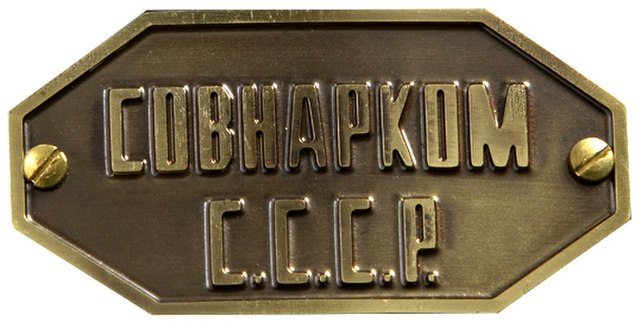Council of Labor and Defense
The Council of Labor and Defense, first established as the Council of Workers' and Peasants' Defense in November 1918, was an agency responsible for the central management of the economy and production of military materiel in the Russian Socialist Federative Soviet Republic and later in the Soviet Union. During the Russian Civil War of 1917-1922 the council served as an emergency "national economic cabinet", issuing emergency decrees in an effort to sustain industrial production for the Red Army amidst economic collapse. In 1920–23 it existed on the rights of the commission of the Russian Sovnarkom and after 1923 of the Soviet Council of People's Commissariats. The Central Executive Committee of the Soviet Union abolished the council on 28 April 1937. Its functions were split between the Economic Council of the Council of People's Commissars of the Soviet Union and the Defense Committee of the Council of People's Commissars of the Soviet Union.

Bolshevik leader Alexei Rykov was named as plenipotentiary of the Council of Workers' and Peasants' Defense in the summer of 1919, helping to cement the organization's position as the top economic authority in Soviet Russia.
Council of People's Commissars of the Soviet Union
The Council of People's Commissars of the Soviet Union was the highest collegial body of executive and administrative authority of the Soviet Union from 1923 to 1946.
The building of the Kremlin Senate, which housed the secretariat of the Chairman of the Council of People's Commissars of the Soviet Union
Image: Sovnarkom USSR
Vladimir Lenin, first chairman of the Council of People's Commissars of the Soviet Union




